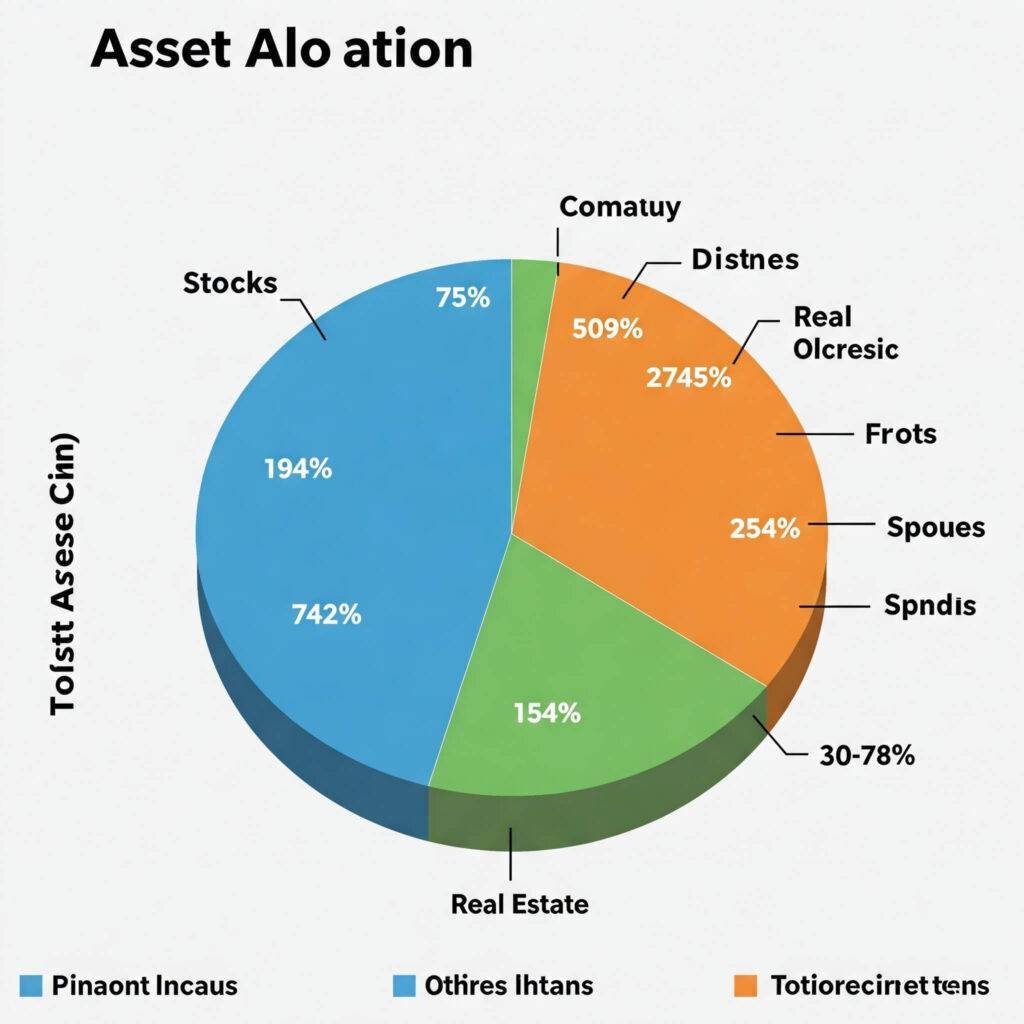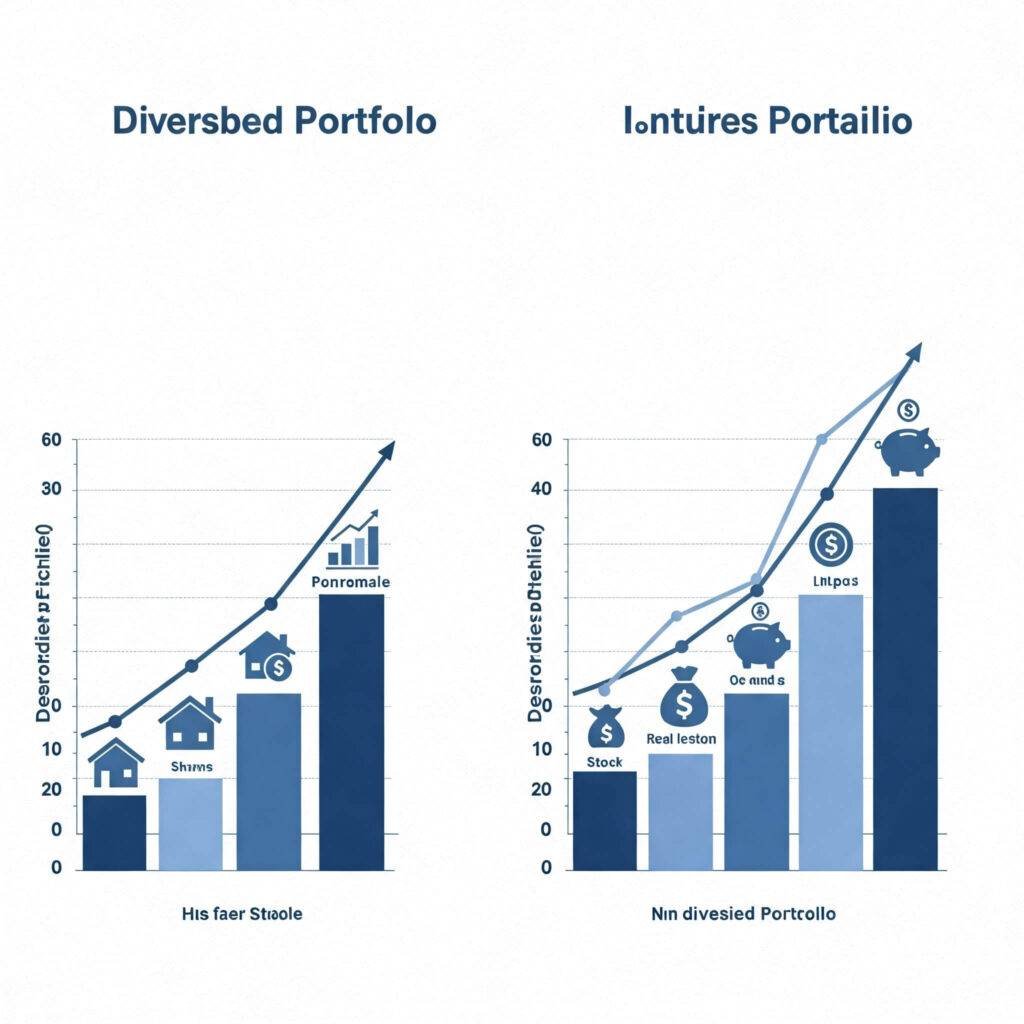Diversifying your investment portfolio is one of the most effective ways to manage risk while maximizing long-term financial growth. By spreading your investments across different asset classes—like stocks, bonds, real estate, and more—you reduce the impact of market volatility on your wealth. In this ultimate guide, we’ll explore why portfolio diversification is essential, share actionable strategies, and provide real-world examples to help you build a resilient investment plan.

What Is Portfolio Diversification?
Portfolio diversification involves allocating your investments across various asset types, industries, and geographic regions to minimize risk. The logic is simple: when one investment underperforms, others may offset the loss. According to a study by Vanguard, diversified portfolios tend to outperform concentrated ones over time due to lower volatility.
Why Diversification Reduces Risk
- Spreads exposure: No single asset dominates your portfolio’s performance.
- Balances volatility: Different assets react differently to market conditions.
- Enhances stability: A diversified portfolio is less likely to experience extreme losses.

Key Strategies for Diversifying Your Investment Portfolio
Here are five proven strategies to effectively diversify your investments:
1. Invest Across Multiple Asset Classes
Spread your money across stocks, bonds, real estate, and commodities. For example, while stocks offer high growth potential, bonds provide stability. Real estate can generate passive income, and commodities like gold can hedge against inflation.
- Stocks: Growth-oriented but volatile.
- Bonds: Lower risk, steady income.
- Real Estate: Tangible assets with rental income potential.
- Commodities: Protection against economic uncertainty.
Example: Jane, a 35-year-old investor, allocates 50% to stocks, 30% to bonds, 15% to real estate, and 5% to gold. When the stock market dipped in 2023, her bonds and real estate cushioned the blow.
2. Diversify Within Asset Classes
Within each asset class, diversify further. For stocks, invest in different sectors (e.g., technology, healthcare, energy) and company sizes (large-cap, small-cap). For bonds, mix government and corporate bonds with varying maturities.
- Sectors: Tech, healthcare, consumer goods, etc.
- Geographies: U.S., emerging markets, Europe.
- Company size: Large-cap for stability, small-cap for growth.
Outbound Link: Learn more about sector diversification at Investopedia.
3. Use ETFs and Mutual Funds for Instant Diversification
Exchange-traded funds (ETFs) and mutual funds pool money to invest in a broad range of assets, offering instant diversification. For example, an S&P 500 ETF provides exposure to 500 leading U.S. companies.
- Benefits: Low fees, broad market exposure.
- Example: The Vanguard Total Stock Market ETF (VTI) covers the entire U.S. stock market.
Outbound Link: Explore ETF options at Vanguard’s ETF Guide.
4. Rebalance Your Portfolio Regularly
Market fluctuations can skew your asset allocation. Rebalancing involves selling overperforming assets and buying underperforming ones to maintain your desired allocation.
- Frequency: Rebalance annually or when allocations shift by 5-10%.
- Example: If stocks grow from 50% to 60% of your portfolio, sell some stocks and reinvest in bonds.
5. Consider Alternative Investments
Alternative investments like cryptocurrencies, private equity, or collectibles can further diversify your portfolio. However, they carry higher risks, so allocate only a small portion (e.g., 5-10%).
- Crypto: High risk, high reward (e.g., Bitcoin, Ethereum).
- Collectibles: Art, wine, or rare coins for niche diversification.

Common Mistakes to Avoid When Diversifying Your Portfolio
While diversifying your investment portfolio is crucial, avoid these pitfalls:
- Over-diversification: Holding too many assets can dilute returns and increase costs.
- Ignoring fees: High fees in mutual funds or ETFs can erode gains.
- Neglecting rebalancing: Failing to adjust your portfolio can lead to unintended risk exposure.
- Chasing trends: Investing heavily in “hot” assets without research can backfire.
Example: In 2021, Tom invested 80% of his portfolio in tech stocks due to their hype. When the tech sector crashed in 2022, his portfolio lost 40% of its value. A diversified approach could have mitigated his losses.
How to Start Diversifying Your Investment Portfolio Today
Ready to diversify? Follow these steps:
- Assess your goals: Are you seeking growth, income, or stability?
- Evaluate risk tolerance: Younger investors can take more risks; retirees may prefer stability.
- Choose a platform: Use brokers like Fidelity or Charles Schwab.
- Start small: Begin with ETFs or mutual funds for easy diversification.
- Monitor and adjust: Review your portfolio quarterly and rebalance as needed.
Conclusion: Build Wealth with a Diversified Portfolio
Diversifying your investment portfolio is a proven strategy to reduce risk and achieve steady financial growth. By spreading investments across asset classes, sectors, and geographies, you can weather market storms and build lasting wealth. Start small, stay disciplined, and rebalance regularly to keep your portfolio aligned with your goals.
Outbound link:

